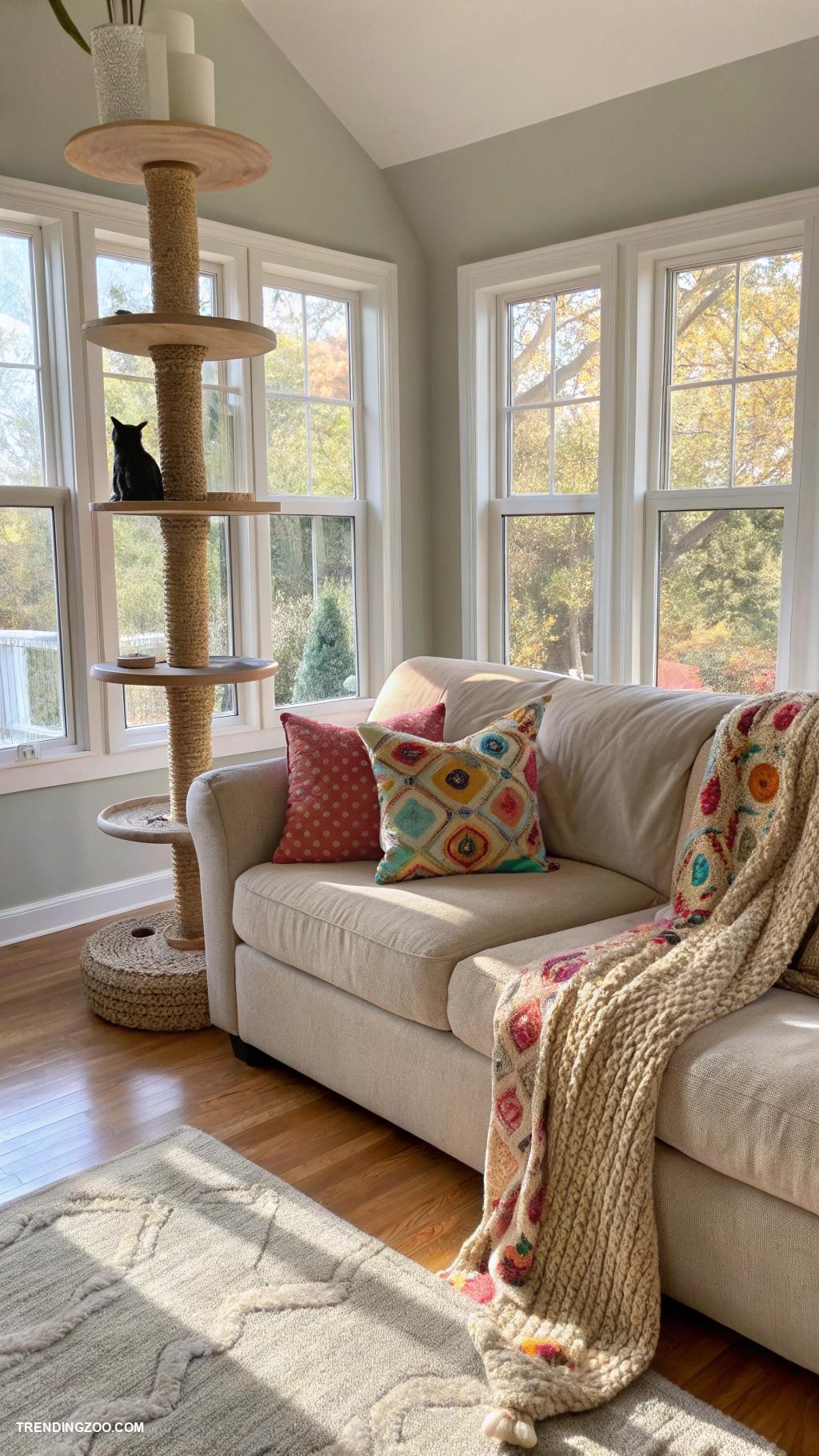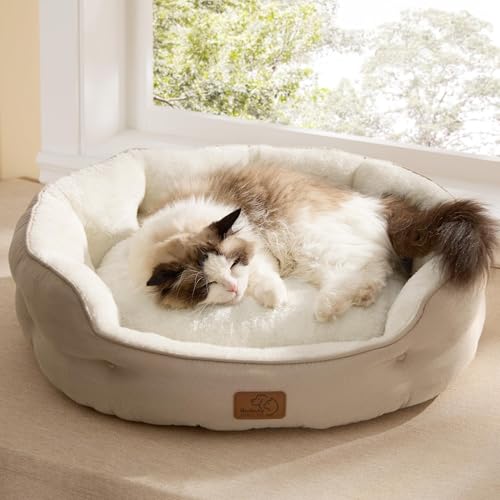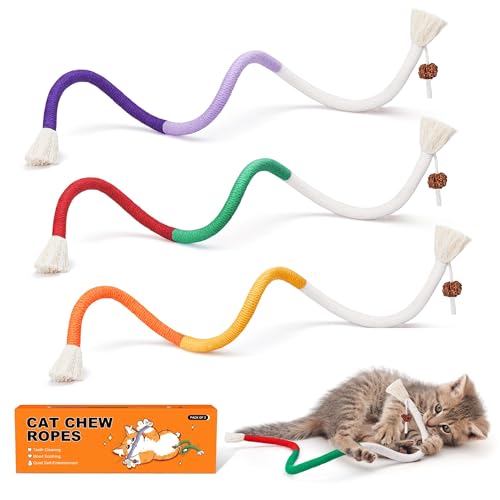As you step into your home, you’re enveloped in a sense of calm and comfort, but what if you could amplify that feeling by incorporating the soothing presence of furry friends? Catification, a term coined by Jackson Galaxy, is the art of designing and optimizing your living space to create a harmonious haven for both you and your feline companions.
By incorporating cat towers, scratching posts, and cozy hideaways, you can turn your home into a cat paradise that not only delights your pets but also improves their physical and mental well-being.
In this article, we’ll explore the purr-fect ways to catify your home, from clever furniture hacks to cleverly hiding your cat’s favorite toys, so you can create a space that celebrates the special bond between humans and animals.
Understanding Your Cat’s Needs
As you embark on the journey of catifying your home, it’s essential to understand your feline friend’s needs and preferences. Cats are natural predators, and they have a unique set of requirements that go beyond mere comfort and companionship.
For instance, they need vertical space to climb, perch, and observe their surroundings, which is why cat towers and shelves are a must-have in any cat-friendly home.
They also require hiding spots and enclosed spaces to feel secure and protected, such as cardboard boxes or tunnels.
In addition, cats have a strong sense of smell and enjoy scratching and rubbing against surfaces to mark their territory. Providing scratching posts and pads made of natural materials like sisal or corrugated cardboard can help redirect this behavior and keep your furniture intact.
Furthermore, cats are highly sensitive to sound and prefer quiet, peaceful environments. This is why it’s crucial to minimize noise levels and create quiet zones in your home, such as a cat bed or a cozy reading nook.
By understanding and catering to these needs, you can create a cat-friendly environment that not only meets your cat’s physical requirements but also provides mental stimulation and emotional comfort. This, in turn, can strengthen the bond between you and your feline companion, leading to a happier and healthier relationship.
The Importance of Vertical Space for Cats
When it comes to catifying your home, vertical space is a crucial consideration. Cats are natural climbers and love to ascend to higher ground, so providing them with ample opportunities to do so can greatly enhance their overall well-being and satisfaction.
Consider installing cat shelves, cat towers, or even a cat tree to give your feline friends a place to scratch, perch, and survey their kingdom. Not only will this provide them with a sense of security and comfort, but it will also help to redirect their natural instincts towards climbing and scratching, which can save your furniture and carpets from damage.
Additionally, vertical space can also be used to create cozy little nooks and crannies for your cats to retreat to, providing them with a sense of seclusion and privacy. By incorporating vertical space into your catification efforts, you can create a stimulating and engaging environment that will keep your cats happy and entertained for hours on end.
Incorporating Cat-Friendly Furniture
When it comes to catifying your home, incorporating cat-friendly furniture is a crucial aspect to consider. Cats are notorious for their love of vertical space and scratching, so it’s essential to provide them with sturdy and comfortable surfaces to climb, scratch, and lounge on.
Consider investing in cat towers or condos that allow your feline friends to scale up and down, and provide a bird’s-eye view of their surroundings. You can also incorporate cat shelves or ledges into your home’s design, allowing your cats to observe the world from a unique vantage point.
Additionally, look for furniture with built-in scratching posts or pads, which can help redirect your cat’s natural scratching behavior away from your expensive furniture and towards a more acceptable surface.
When selecting cat-friendly furniture, be sure to choose materials that are durable and easy to clean, such as sisal rope or carpeted surfaces.
By incorporating these types of furniture pieces into your home, you’ll be creating a feline-friendly environment that will keep your cats happy, entertained, and well-cared for.
Creating Cozy Hideaways
Creating cozy hideaways is an essential aspect of catifying your home, as it allows your feline friends to retreat and recharge in a comfortable and secure environment. Cats are naturally inclined to seek out hidden spots where they can observe their surroundings without being observed themselves, and by providing these types of spaces, you can help reduce your cat’s stress levels and promote a sense of calm.
To create a cozy hideaway, start by selecting a quiet and private area of your home, such as a corner of a room or a small nook. Then, add some soft and plush bedding, such as a cat bed or a blanket, to provide a comfortable surface for your cat to curl up on. You can also add some hidden compartments or tunnels to create a sense of excitement and exploration.
For example, you could add a cardboard box with a hole cut out of one side, allowing your cat to enter and exit through a narrow opening. Alternatively, you could use a cat tree or scratching post with built-in hideaways and perches.
By incorporating these types of features into your home, you can create a cat-friendly environment that your feline friends will love.
Cat-Safe Plants and Décor
When it comes to catifying your home, one crucial aspect to consider is ensuring that your feline friends have access to safe and stimulating environments. This includes selecting cat-safe plants and décor that won’t harm or harmlessly tolerate your curious cats’ explorations.
While it’s tempting to bring in lush greenery to brighten up your space, many plants are toxic to cats, causing symptoms ranging from mild irritation to severe organ damage. For instance, popular plants like lilies, tulips, and daffodils contain toxic compounds that can cause severe kidney damage if ingested. On the other hand, some plants like catnip, mint, and lemongrass are actually beneficial for cats, stimulating their senses and encouraging playful behavior.
Jeasona Women's Cute Socks Cat Gifts for Women Fun Animals Funny Funky Cotton
$13.99 (as of December 6, 2025 08:40 GMT -05:00 - More infoProduct prices and availability are accurate as of the date/time indicated and are subject to change. Any price and availability information displayed on Amazon at the time of purchase will apply to the purchase of this product.)When it comes to décor, cats often have a fascination with shiny objects, strings, and other small items that can be easily swallowed. Opt for cat-safe alternatives like crinkly paper, cardboard tubes, and fabric scraps to keep your feline friends entertained without posing a choking hazard. Additionally, ensure that any decorative items you bring into your home are securely fastened and won’t topple over, potentially injuring your cats.
Designating Play Areas
When it comes to catifying your home, one crucial aspect to consider is designating play areas for your feline friends. Cats are natural predators and love to engage in play, which is essential for their physical and mental well-being. Designating specific areas for play can help redirect their energy and prevent destructive behavior elsewhere in the home.
Start by identifying areas that can be converted into play zones, such as empty rooms, closets, or even a section of a room. Make sure these areas are safe and free from hazards, such as electrical cords, toxic substances, or fragile items. Next, add some stimulation with cat toys, scratching posts, and climbing structures.
You can also incorporate vertical space by installing cat shelves or cat trees, allowing your cats to climb, perch, and observe their surroundings.
To make these areas even more enticing, consider adding some catnip, feather wands, or laser pointers to encourage play and exploration. By designating play areas, you’ll not only provide your cats with a fun and engaging environment but also help them stay happy, healthy, and entertained.
Choosing the Right Scratching Posts
When it comes to catifying your home, one crucial aspect to consider is providing your feline friends with suitable scratching posts. Cats have an inherent need to scratch, which helps them maintain their nails, stretch their muscles, and mark their territory. A good scratching post can redirect this behavior away from your furniture and carpets, saving you from unnecessary damage.
To choose the right scratching post, consider the size and age of your cat, as well as their personal preferences. For example, kittens may prefer shorter, sturdier posts with a carpeted surface, while adult cats may prefer taller, more slender posts with a sisal rope or corrugated cardboard surface. Look for posts made from durable materials, such as solid wood or metal, and consider adding catnip or treats to entice your cat to use the post.
You may also want to consider multi-level scratching posts that provide a variety of textures and surfaces for your cat to explore. Ultimately, the key is to find a scratching post that your cat finds comfortable and appealing, so be prepared to try out a few different options before finding the perfect one.














